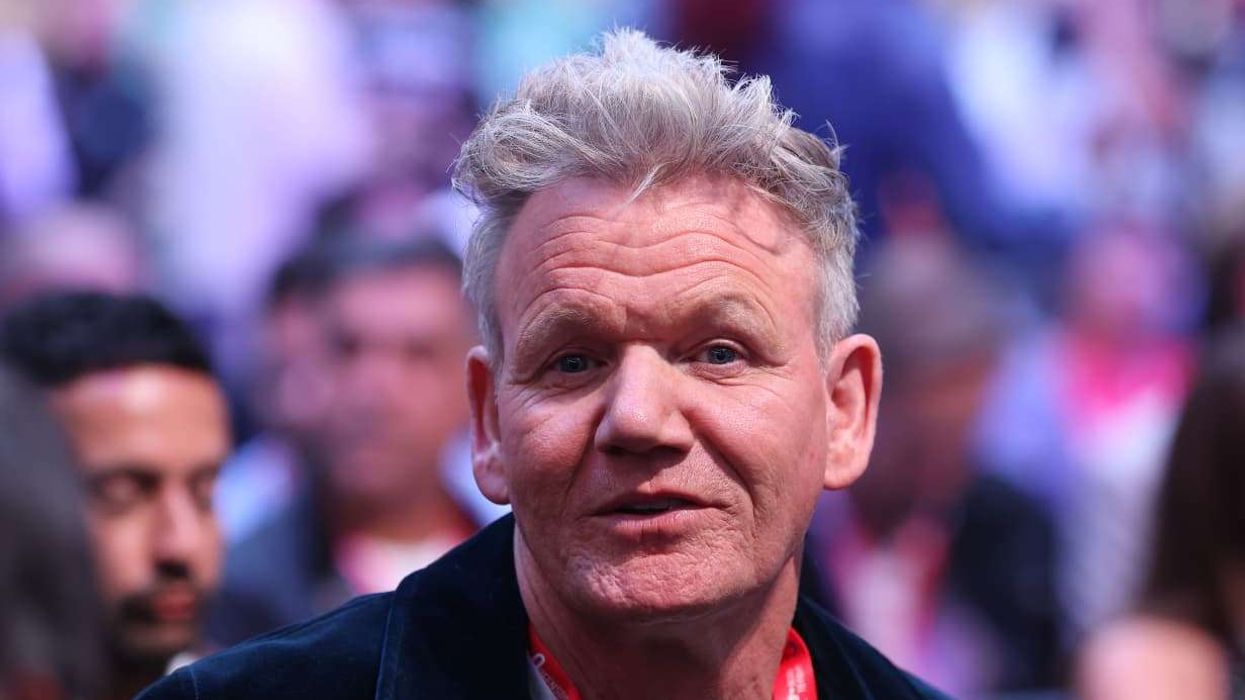PERHAPS no other figure has quite the same level of public recognition as Anish Kapoor ( - some might suggest fellow knight David Hockney but he is considerably older).
That is something of a testament not only to his work as a sculptor and creator, but his general persona too.
A supporter of many a liberal cause, he often attracts opprobrium from those who detest British figures who are creative, critical and not necessarily by obvious design, very rich too.
He is the only artist of this type to appear in our sister publication, the Eastern Eye Asian Rich List.
But wealth alone is no indicator of power and public standing - as we well know producing that publication and this one.
Since his Turner Prize win in 1991, he has gone onto become one of the great global artists of his generation and the quality and scale and range of his work surely exhibit this.
There is the ArcelorMittal Orbit, built for the 2012 London Olympics: it still has a majestic presence in the Olympic Park and along with its added slide remains one of the most popular tourist attractions for those visiting London. Kapoor had announced his reluctance about the addition of the slide – but with the structure still in debt, funds are still required and putting on a slide has helped.
In Chicago, there is Cloud Gate, which is the centrepiece of the AT&T Plaza in Millennium Park there. Created over two years and completed in 2006, it is known colloquially as ‘the bean’, such is its shape. Kapoor himself refers to it as Cloud Gate but is reportedly not as opposed to the popular reference as he was when it was first completed.
It is regarded not only as a great tourist attraction for the city but has brought visitors from all over the US. There have been several episodes of vandalism - but the city authorities are vigilant and have removed all very quickly. Detergent and polish are said to do the trick. Last year, the structure was the subject of controversy as National Rifle Association (in the US) used it as a backdrop to a video called, ‘The Violence of Lies’. Kapoor reacted furiously and won a court case where that section of the film had to be removed. He called the video, “abhorrent” and said it sought to provoke fear, hostility and division - something he would not countenance.
This year there has been a major exhibition in Santiago, Chile, exhibiting many of his previous works which showed at the Royal Academy exhibition in 2009 and was one of the most popular ever. Closer to home there was an exhibition of his mirrors at Pitzhanger Manor in London.
There is the ongoing row about Kapoor being the only artist able to use Vantablack – this is the blackest of black materials. Originally designed for space and defence purposes, Kapoor was able to purchase it and then hold the exclusive rights to use it.
Artist Stuart Semple first created a pink – the pinkest pink, you could ever find as a response in 2016 and declared anyone could use it except Kapoor or his associates. Perhaps a little predictably, Kapoor was able to get around the ‘ban’ and posted a picture showing he had obtained the pinkest pink,
In February 2018, Semple showed he wasn’t letting up – he has created Black 3 - it absorbs between 98 and 99 per cent of all visible light and Semple described it as ‘a black hole in a bottle’. In a video, he told people it was very was costly to manufacture and had started a Kickstarter to obtain funding to be able to use it in his art aand welcomed anyone except Kapoor to use it. It isn’t quite as black as Kapoor’s Vantablack, which absorbs 99.6 per cent of light. But in a further twist in September, artnetnews reported that scientists at Massachusetts Institute of Technology (MIT) had created the blackest of black – so dark it could completely obscure a 16.78 carat diamond (worth about £1.70m). Christened, The Redemption of Vanity, and a collaboration between scientist Brian Wardle, professor of aeronautics and astronautics at MIT, and Boston-based German-born artist Diemut Strebe, the two were well aware of Kapoor’s stance. Kapoor’s Vantablack is made up of carbon nanotubes.
A statement from MIT, says: “The project can also be interpreted as a statement against British artist Anish Kapoor’s purchase of exclusive rights to a formula of carbon nanotubes as a material for artworks. Strebe and Wardle use a different composition of carbon nanotubes, which will be available to any artist.”
It’s the last line that puts Kapoor in the firing line.
Since the Brexit vote, Kapoor has become one of its most vocal public opponents. For him, and many like him, it has opened the floodgates of racism and intolerance - he has actual experience of being abused as someone who could not speak English the day after the result.
He feels difference is no longer celebrated but granted permission by people who control the levers of power and subtly encourage division and discrimination and hide behind notions of Britishness and populism.
Kapoor came to Britain to study and after an unhappy time in Israel where he realised he was not going to be an engineer, like most of his family. He accepted this from his time at Be’er Sheva University and he returned to a Kibbutz, seeking sanctuary before setting off for London and then the bright lights of Chelsea Art College.
He was born in Mumbai to a Punjabi father and an Iraqi Jewish mother. He sees himself very much culturally as Jewish and he champions all minorities, believing Islam in the West has come under much unfair attack.
Britain rarely shows such appreciation to its artists, but Sir Anish Kapoor is his more formal title and he remains someone of enormous international repute and standing and a totemic figure for many on the liberal Internationalist Left.







